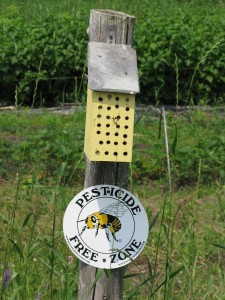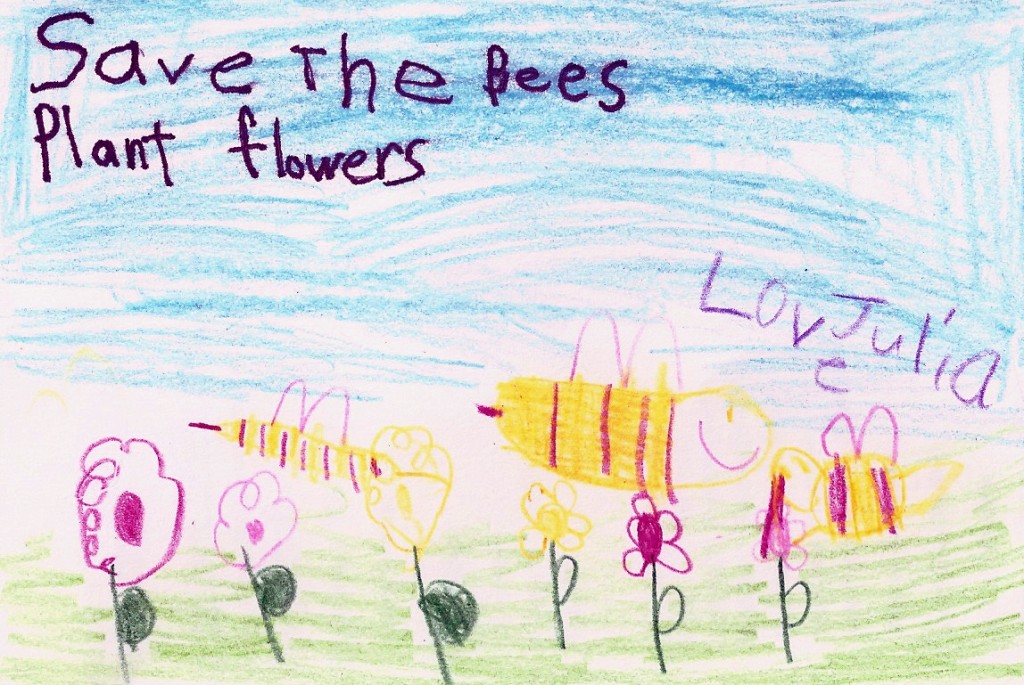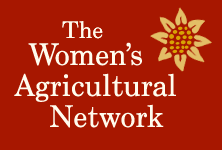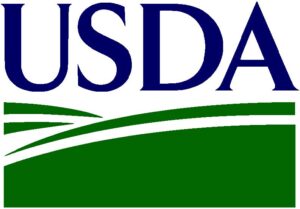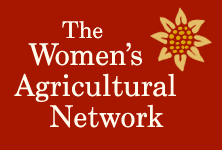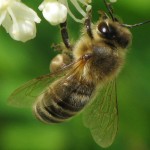 A recent visit to The Farm Between inspired me to learn more about pollinators. And, as it turns out, SARE’s Managing Alternative Pollinators was a great pick for my summer reading list!
A recent visit to The Farm Between inspired me to learn more about pollinators. And, as it turns out, SARE’s Managing Alternative Pollinators was a great pick for my summer reading list!
John and Nancy Hayden, who grow a wide variety of organic fruits at The Farm Between in Jeffersonville, are Vermont’s newest recipients of a Northeast SARE Farmer Grant. The competitive grants program funds farmers (and others) to conduct innovative, applied sustainable agriculture research and share results with farmers throughout the region. John and Nancy’s project is called, “Investigating ways to improve native pollinator floral resources.” Their on-farm trial will evaluate three cover crops–Phacelia, buckwheat, and a commercial bee forage mix–for their potential as pollinator conservation, beneficial insectaries and weed suppression.
Phacelia (also called purple tansy, lacy Phacelia, scorpion weed, and/or fiddle neck) is a particularly interesting addition because, while it is native to the U.S. (semi-arid regions of the west), it has not been typically used as a cover crop here. It is, however, widely used in Europe as a cover and “bee” crop. Throughout the growing season, the Hayden’s will monitor the covers for bloom time, presence of native pollinators and other beneficial insects, and weed pressure. Their project will likely make an important contribution to our collective understanding of how to support pollinators in a practical, farm-friendly way.
Of course, John and Nancy’s love for pollinators extends beyond the scope of this project. The farm, which has transitioned from mostly livestock to mostly vegetables to now wholly fruits, is what I like to think of as a pollinator’s luxury resort destination. Because of fruit’s dependence of good pollination, John’s entomology and ecology background, and/or because, well, bees are just plain cool, pollinators are treated with great care on this farm. Nancy maintains several honey bee hives but there are also nesting boxes galore for other pollinators like mason bees and leafcutters. Berms of twigs and manure provide potential habitat while also creating rows of fertility for future plantings. They even have some sand patches for the ground nesters. Plants in wind rows and/or scattered around the farm are maintained as pollinator resources, providing important sources of pollen and nectar between bloom times of the fruit plantings.
It is hard not to be totally inspired and eager to learn more about pollinators after visiting The Farm Between (click here to see more farm photos). And therefore, Managing Alternative Pollinators: A Handbook for Beekeepers, Growers, and Conservationists by Eric Mader, The Xerces Society; Marla Spivak, University of Minnesota; and Elaine Evans, co-author of Befriending Bumble Bees, made a perfect summer read for me. The book, published by the national SARE office and NRAES and written in a “folksy” style (says its authors), 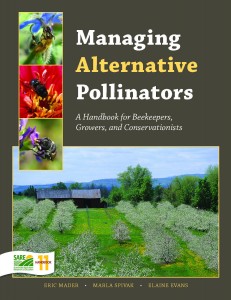 focuses on rearing and managing three “alternative” pollinators, namely bumble bees, mason bees, and alfalfa leafcutter bees. But for a novice like me, it was also choc-a-bloc full of interesting bee facts worthy of cocktail party conversation (again, says its authors). For example, I learned how bees got their stingers (evolved ovipositors), that all bees are “fuzzy” (due to plumose hairs to help collect pollen), different species have different tongue lengths and are therefore suited to different flower types, and many more tidbits that have made my kids run from the room when I pick up the book (despite their focus on pollinators at school–see drawing below)! The book also gave me a greater respect for the importance of all pollinators to our food system–the authors estimate that each year, honey bees alone contribute $14.6 billion worth of increased yield and quality to our pollinated foods (not to mention the $20 billion worth of insect-pollinated crops themselves) and native bees contribute at least $3 billion annually to U.S. agriculture. That these creatures have been on the decline — due to parasite pressures, pesticides, climate change, and habitat loss–is a wake up call to find ways to protect these important insects.
focuses on rearing and managing three “alternative” pollinators, namely bumble bees, mason bees, and alfalfa leafcutter bees. But for a novice like me, it was also choc-a-bloc full of interesting bee facts worthy of cocktail party conversation (again, says its authors). For example, I learned how bees got their stingers (evolved ovipositors), that all bees are “fuzzy” (due to plumose hairs to help collect pollen), different species have different tongue lengths and are therefore suited to different flower types, and many more tidbits that have made my kids run from the room when I pick up the book (despite their focus on pollinators at school–see drawing below)! The book also gave me a greater respect for the importance of all pollinators to our food system–the authors estimate that each year, honey bees alone contribute $14.6 billion worth of increased yield and quality to our pollinated foods (not to mention the $20 billion worth of insect-pollinated crops themselves) and native bees contribute at least $3 billion annually to U.S. agriculture. That these creatures have been on the decline — due to parasite pressures, pesticides, climate change, and habitat loss–is a wake up call to find ways to protect these important insects.
“The European honey bee is overworked and undervalued. With every publicized crisis, she is telling us that she needs a rest. Alternative managed pollinators are not a substitute for the honey bee, but they are a supplement on the road to a holistic multi-species approach to crop pollination.” — Eric Mader, pollinator outreach coordinator, The Xerces Society
The book is free online as a pdf suitable for tablet-reading or available in hard copy through SARE’s webstore. Happy summer reading!



